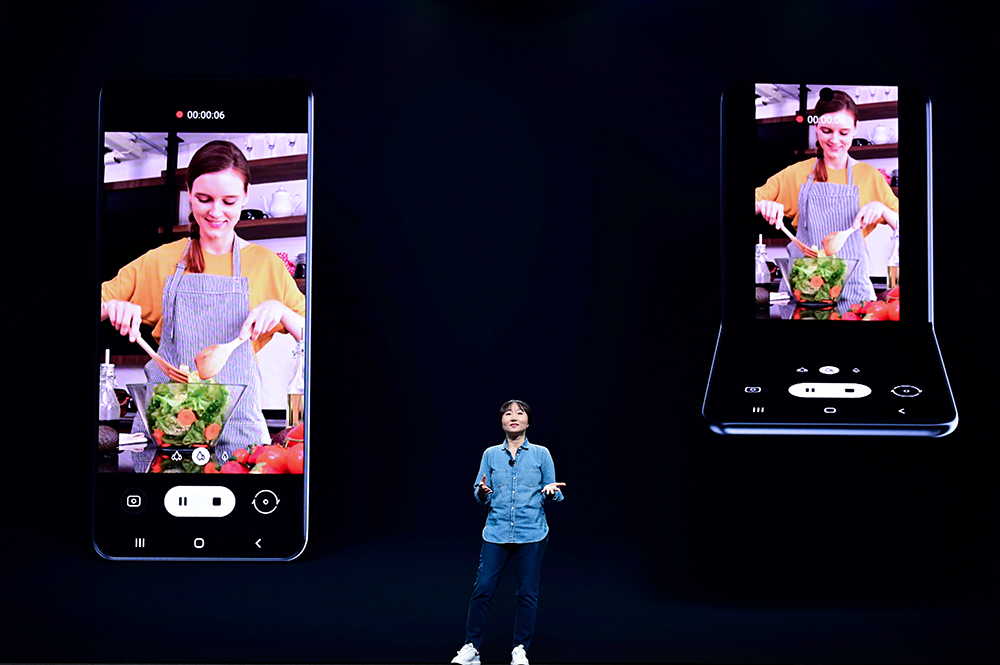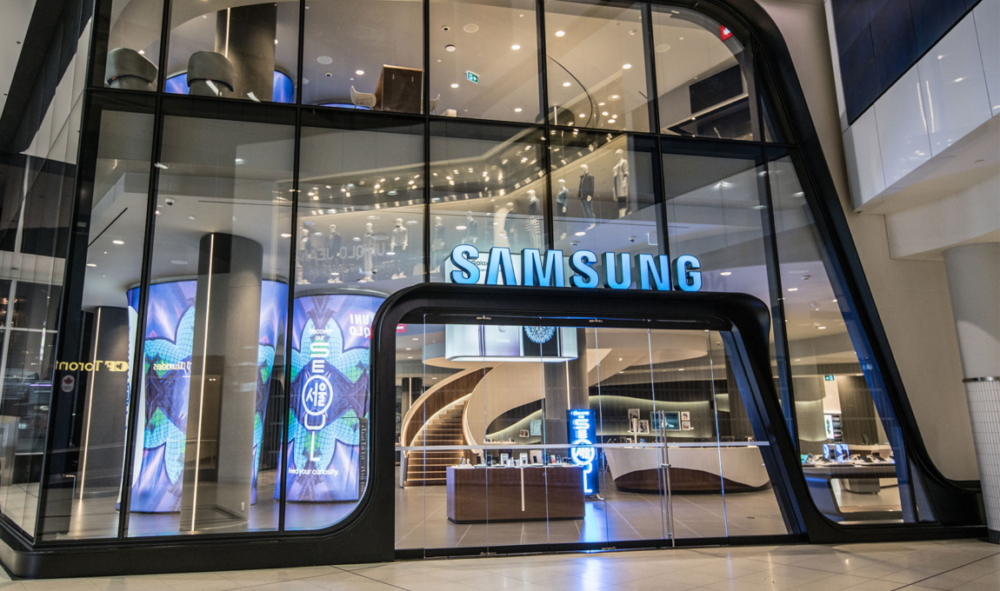Samsung Electronics today reported financial results for the third quarter ended September 30, 2019. The Company posted KRW 62 trillion in consolidated quarterly revenue and KRW 7.78 trillion in quarterly operating profit.
Third quarter profit fell sharply from a year earlier but improved from the previous quarter, as stronger smartphone sales and improved utilization in mobile OLED screens were weighed down by continued weakness in the memory chip market.
Both the U.S. dollar and euro strengthened against the Korean won, resulting in about KRW 0.4 trillion in positive effects toward quarterly operating profit, mainly in the component business.
Earnings from the Memory Business slumped significantly year-on-year as memory chip prices continued its downward trend amid the industry-wide weakness since the end of 2018. The logic chip business saw demand rise for image sensors and display driver ICs (DDIs), but also suffered from price declines in mobile application processors (APs).
The Display Panel Business saw profit from mobile displays increase YoY with solid sales of OLED screens, improved capacity utilization and reduced costs. However, losses continued in the large panel business due to ongoing capacity expansions in the broader industry.
In the Mobile Business, strong sales of the Galaxy Note 10 and A series boosted profit, along with improved margins for mass-market models. The business also expanded its 5G product offerings and launched the Galaxy Fold, demonstrating Samsung’s technology leadership. Meanwhile, the Network Business reported higher earnings YoY on growing commercialization of 5G service in Korea.
The Consumer Electronics Division posted a YoY decline in profit from the TV business amid pricing pressure from intensifying competition, despite growing shipment of premium models such as QLED and ultra-large size TVs. Earnings from home appliances rose on increased sales of premium products.
Looking ahead to the fourth quarter, the Company expects demand for components to turn sluggish in general amid weak seasonal effects, while marketing expenses are likely to increase to address year-end smartphone sales.
Memory chip demand is seen rising slightly quarter-on-quarter on the back of inventory building by customers in response to global macroeconomic uncertainties. Mobile displays will likely report weaker results in the fourth quarter, as demand falls short of initial expectations for certain premium smartphones and costs increase due to lower utilization in some production lines. Large panel prices are also likely to continue declining.
The Company expects fourth-quarter earnings in the Mobile Business to decrease QoQ as marketing costs are set to rise and shipments to decline slightly, with flagship model sales weakening from their post-launch peaks. The Consumer Electronics Division will likely log stronger earnings helped by year-end seasonal demand.
For 2020, Samsung expects growing sales in 5G products and foldable devices; the logic chip business is forecast to report accelerated growth as it expands mass production of next-generation extreme ultraviolet lithography (EUV) based products.
However, uncertainties linger over the memory chip market as demand is seen recovering but risks from global industry circumstances persist. As Samsung plans to manage investment and capacity operation flexibly depending on market conditions, DRAM inventory is expected to normalize in the first half of 2020. The Company also remains committed to investments to meet demand in the mid-to-long term.
The System LSI Business will introduce differentiated 5G System-on-Chip products and high-resolution sensors, while the Foundry Business will seek to diversify its client base and expand production from the 5nm and 7nm EUV processes.
In Displays, Samsung plans to leverage its leadership in mobile screens, offering power-efficient and slimmer products to capture demand from 5G and other premium products. It will also transform its large panel business to focus on quantum-dot (QD) displays, with the existing LCD business addressing value-added products such as ultra-large and 8K TVs as well as high-end monitors.
The Mobile Business aims to improve profitability through enhanced leadership in premium products such as 5G and foldable devices as well as improved mass-model lineup. The Network Business will further its efforts to expand its 5G business globally including the United States and Japan.
In the Consumer Electronics Division, the Company will continue to lead the premium TV market by expanding adoption of QLED 8K and ultra-large models and offer stronger lineups of innovative home appliances such as Bespoke products.
Semiconductor Demand to Remain Solid Amid Uncertainties
The Semiconductor Business posted consolidated revenue of KRW 17.59 trillion and operating profit of KRW 3.05 trillion for the quarter.
For NAND, demand showed stronger growth than expected driven by new smartphone launches and continued trend toward higher density memory, as well as increased adoption of solid state drives for PCs and expansion of high-density storage for server customers.
For DRAM, demand from all applications has greatly increased due to strong seasonal effects as well as inventory restocking at customers responding to global macroeconomic factors such as tariff issues and semiconductor-material export regulations. For servers, demand rose mainly for high-capacity products, while for PCs, replacement demand for corporate systems also increased ahead of the end of support for Windows 7. For mobile, demand was driven by higher portion of smartphones with storage over 8GB.
Looking ahead to the fourth quarter for NAND, demand for high-capacity storage is expected to remain robust and prices are expected to rebound across all applications. For SSD, data centers are expected to adopt high-density, high-performance products, while for mobile, the trend of higher density storage is expected to continue with the launch of new high-end models. The Company will focus on strengthening competitiveness in the premium market, and enhance technology leadership and profitability by transitioning to 6th-generation V-NAND within this year.
For the fourth quarter outlook for DRAM, although there may be some impact from recent inventory restocking at customers, overall demand is likely to remain solid and to show some increase QoQ. For servers, demand from data centers will continue to be solid supported by high-density products, while for PCs, overall demand will be similar to that of the third quarter. For mobile, continuing trend to high-density products with the launch of new 5G smartphones is expected to help demand remain solid. The Company will focus on enhancing technological leadership by expanding high-capacity product sales for servers and actively responding to early demand for mobile LPDDR5.
Looking ahead to 2020, while challenging to provide a detailed forecast due to ongoing uncertainties involving macroeconomic issues, there are positive signs on the demand outlook from data center customers, while expansion of 5G smartphones is expected to continue to lead the higher density trends. However, demand for 2020 should be viewed with caution as uncertainties remain in the macroeconomic environment. As such, the Company plans to focus more on flexible investment and capacity operation depending on market conditions.
For the System LSI Business, earnings improved as demand increased for high-resolution image sensors and mobile APs/PMICs/OLED DDIs for flagship smartphones. The Company strengthened its technology leadership by being the first to commercialize 108-mega pixel sensors.
In the fourth quarter, while demand for high-resolution image sensors such as 64Mp and 108Mp products will continue to increase, earnings are likely to remain flat from the previous quarter due to weaker demand for mobile APs and DDIs. For 2020, the Company will expand its line-up of differentiated products such as 5G System-on-Chips produced on EUV 5/7nm process and high-resolution products such as 108Mp and above sensors.
For the Foundry Business, earnings increased from the previous quarter driven by demand for mobile APs based on the EUV 7nm process and high-resolution image sensors. In particular, the Company completed the tape-out of the EUV 5nm process and secured new orders for 5nm-based consumer products.
In the fourth quarter, the Company expects to generate solid earnings on mass production of EUV 7nm products, while setting up 4nm design infrastructures for future growth. For 2020, demand for mobile APs/modes/RFs and high-resolution image sensors is expected to increase significantly on the back of the growing 5G market. The Company will accelerate the diversification of its customer base by expanding orders for 5G/AI/Auto/IoT/Power and fingerprint recognition applications and strive to complete the development of the GAA 3-nano process.
Display Business Improves on Demand for Flexible OLED
The Display Panel Business posted KRW 9.26 trillion in consolidated revenue and KRW 1.17 trillion in operating profit for the third quarter. Overall display earnings improved QoQ thanks to strong sales of small to mid-sized OLED panels despite weak performance in the large display business.
Mobile display earnings increased amid favorable seasonal effects, led by higher demand from major customers and improved OLED utilization rates. Large displays took a hit from a continued decline in LCD panel prices.
Looking ahead to the fourth quarter, mobile display profitability is expected to decline due to a product mix change and a cost increase from lower utilization of some production lines. Samsung will strive to enhance profitability by improving production efficiency and expanding adoption of the cutting-edge technology.
Large displays are also likely to see weak profitability for the fourth quarter as it continues to face falling demand and dropping price. Samsung will seek to secure profitability with product diversification including monitors and PIDs.
In 2020, for the mobile display business, demand for OLED screens is seen to grow steadily with wider adoption of 5G smartphones despite intensified competition. The Company will continue to focus on expanding sales and boosting utilization with a broader customer base and stronger cost competitiveness. Additionally, Samsung will aim to actively address demand for foldable display panels and minimize seasonal impacts with wider applications.
For large displays, Samsung will look to realign its business structure to focus on QD-Display. It will continue to secure profitability by expanding sales of value-added products such as ultra-large panels, 8K TVs and premium monitors.
Galaxy Note 10 Props Up Mobile Business Earnings; 5G Momentum Driver in 2020
The IT & Mobile Communications Business posted KRW 29.25 trillion in consolidated revenue and KRW 2.92 trillion in operating profit for the September quarter.
Mobile earnings in the third quarter improved significantly QoQ on robust shipments of the flagship Galaxy Note 10, a better product mix and higher profitability in the mass-market segment. The Galaxy Note 10 in the third quarter exceeded its predecessor’s sales performance, presenting double-digit growth in volume. Cost reduction brought on by the completion of the A series lineup transition also contributed to improved profitability.
Notably in the third quarter, the Company firmed up its global technology leadership with the expansion of 5G smartphones, in addition to the launch of the Galaxy Fold featuring a new form factor.
For the Network Business, the Company continued expanding 5G coverage in South Korea and shipments for LTE expansion outside the country.
In the fourth quarter, while mobile demand is expected to decline YoY on seasonal effects and persistent global economic uncertainties, the Company’s mass-market smartphones, including the new A series, are projected to maintain solid sales. However, Samsung expects profit to decrease due to dissipating new model effects of the Galaxy Note10 and increasing marketing costs under strong seasonality.
Looking ahead to 2020, consumer demand for 5G devices is expected to rise as 5G networks expand globally, while competition is likely to remain fierce. The Company plans to offer more 5G devices and foldable products to enhance its competitiveness and build a foundation for further growth. For the Network business in the fourth quarter and the coming year, the Company will remain an active player in expanding South Korea’s 5G coverage and foster growth in other global markets like the United States and Japan.
Premium TVs, Innovations Such as Bespoke Key Focus for Consumer Electronics
The Consumer Electronics Division, comprised of the Visual Display and Digital Appliances businesses, recorded KRW 10.93 trillion in consolidated revenue and KRW 0.55 trillion in operating profit for the third quarter of 2019.
Profits for TVs were down slightly in annual terms in the third quarter due to heightened price competition, but strong sales of premium TVs such as QLED and ultra-large models helped the division maintain revenue growth compared to a year ago.
In the fourth quarter, the Company forecasts TV demand will soften YoY on downside risks including global economic sluggishness and unfavorable foreign exchange rates stemming from trade protectionist practices. To mitigate the fallout from these risks, the Company plans to expand sales of QLED TVs and broaden the lineup of super-large screen products, cementing its leading position in the premium market. For 2020, TV demand will likely bounce back on global sports events like the Olympic Games in Tokyo while the Company plans to seek new business growth from 8K TVs and MicroLED TVs.
Digital appliances saw increased earnings in the third quarter from a year ago on new product releases like the customizable Bespoke refrigerator. Demand in developed markets in North America and Europe was stagnant but this was offset by sales in emerging market countries including India.
For the December quarter, the Company plans to boost sales of products such as dryers and Air Dressers (garment refreshers) while simultaneously launching year-end, peak season promotion events. In the year ahead, demand will grow centered around emerging market countries, while the Company is expected to expand its premium lineup with other Bespoke products and strengthen its B2B business.
※ Consolidated Sales and Operating Profit by Segment based on K-IFRS (2017~2019 3Q)
Note 1: Sales for each business include intersegment sales
Note 2: CE (Consumer Electronics), IM (IT & Mobile Communications), DS (Device Solutions), DP (Display Panel)
Note 3: Information on annual earnings is stated according to the business divisions as of 2019
* This article was originally published here






































